
Commentary
iMGP Alternative Strategies Fund Fourth Quarter 2024 Commentary
The Alternative Strategies Fund was down less than a percent during the quarter, resulting in a full year return of 6.8%. MORE
Lower risk and lower volatility than the stock market
Volatility in the range of 4% to 8%
Strong absolute, relative and risk-adjusted returns over full market cycles
We consider the fund a substitute for a portion of a portfolio's exposure to traditional stocks and bonds. If the fund meets our goals, iM Global Partner believes that it has the potential to offer returns that are better than a conservative stock/bond mix with less volatility and downside risk. It has historically produced returns significantly better than core bonds with low correlation to the Bloomberg Aggregate Bond Index. There are no guarantees that the fund will meet our goals.


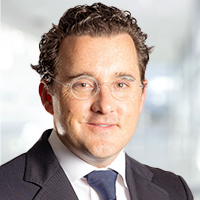
Adam Dwinells has been with DCI since 2005 — he has experience in a variety of capacities including client service, performance analysis, and project management. He leads the team responsible for day-to-day management of DCI’s credit portfolios with a particular focus on cash corporate bond trading. Prior to joining DCI, Dwinells spent six years at JP Morgan and predecessor companies as a vice president and senior risk advisor in various risk management and audit capacities—with responsibility for credit and rate markets, and corporate treasury business coverage.

Prior to joining DCI in 2016, Harrison was a Managing Director at BlackRock, Inc. (formerly BGI) where he served as the CIO and Head of Research for the firm’s systematic Global Macro team and held a variety of firm-wide leadership roles. Harrison directly led a 30-person team researching and implementing systematic strategies and funds catering to top-tier institutional clients, including managing very large investment portfolios and building scalable and robust investment processes. Harrison also headed up the firm’s Multi-Asset Global Asset Allocation business, responsible for over $30 billion of AUM. He has extensive experience in Fixed Income and has built and managed investment strategies focused on both credit and government bond markets. He began his career as an academic, having served on the faculty at Brandeis University and publishing in academic journals.
Blackstone Credit’s strategies employ a systematic portfolio construction process underpinned by a proprietary, fundamental model of credit risk and valuation. Blackstone’s investment process is designed to exploit information gaps between credit and equity markets and other market inefficiencies to identify and capture mispricing at the individual asset level. The Blackstone Credit Long-Short Credit Strategy seeks to generate returns from idiosyncratic credit selection, as the strategy systematically curtails rate duration and credit beta exposure. Correlations to systematic market risks including high yield and equity market returns are expected to be minimal, and strategy returns are not expected to be correlated to the returns of other active strategies. The Blackstone Credit Long-Short Credit Strategy is designed to perform in both low and high volatility environments although returns are expected to be higher in higher volatility environments. Blackstone targets superior risk-adjusted returns from portfolios of corporate credit assets through the selection of potentially mispriced individual securities. The principal driver of Blackstone’s strategies is its dynamic proprietary default probability model which incorporates fundamental balance sheet information and real-time information embedded in equity and options markets. Blackstone’s model uses this information to calculate credit spreads that, when compared to market spreads, identify potential mispricing that can be potentially exploited. Excess returns are anticipated over time as market prices converge to the actual risk levels and fair value pricing of the exposures, as indicated by Blackstone’s model. Blackstone’s technology produces timely risk measures for thousands of investments, which are monitored in real-time, providing early warning capabilities and a large universe from which to create portfolios. Blackstone believes its approach to generating returns is unique in its integration of technology, infrastructure, ongoing research, and credit expertise. Blackstone believes that the inability of conventional credit approaches to consider equity and other market information systematically, and their propensity to build portfolios around issue weightings, are features that create persistent inefficiencies in the market. These features are largely driven by the qualitative, discretionary style that conventional credit market participants use. While marginal information efficiencies are likely to come about as a natural part of the credit market’s maturation, as long as conventional credit investors dominate the market, exploitable inefficiencies will exist for Blackstone.

Jeffrey Gundlach is CEO of DoubleLine. In 2011, he appeared on the cover of Barron’s as “The New Bond King.” In 2013, Institutional Investor named him “Money Manager of the Year.” In 2012, 2015 and 2016, he was named one of “The Fifty Most Influential” in Bloomberg Markets. In 2017, he was inducted into the FIASI Fixed Income Hall of Fame. Gundlach is a summa cum laude graduate of Dartmouth College, with degrees in Mathematics and Philosophy.

Jeffrey Sherman, CFA® oversees and administers DoubleLine’s Investment Management sub-committee coordinating and implementing policies and processes across the investment teams. He also serves as lead portfolio manager for multi-sector and derivative-based strategies. He is a member of DoubleLine’s Executive Management and Fixed Income Asset Allocation Committees. He can be heard regularly on his podcast “The Sherman Show” where he interviews distinguished guests, giving listeners insight into DoubleLine’s current views. In 2018, Money Management Executive named Sherman as one of “10 Fund Managers to Watch” in their yearly special report. Prior to joining DoubleLine in 2009, he was a Senior Vice President at TCW where he worked as a portfolio manager and quantitative analyst focused on fixed income and real-asset portfolios. He was a statistics and mathematics instructor at both the University of the Pacific and Florida State University, and taught Quantitative Methods for Level I candidates in the CFA LA/USC Review Program for many years. He holds a BS in Applied Mathematics from the University of the Pacific and an MS in Financial Engineering from the Claremont Graduate University. He is a CFA® charterholder.
Gundlach and his team at DoubleLine operate under the cardinal mandate of delivering superior risk-adjusted fixed-income returns. They seek to deliver positive absolute returns in excess of an appropriate aggregate fixed-income index with portfolio volatility that is similar to U.S. long-term treasury securities. Investment ideas employed by Gundlach and his team must offer an asymmetric, positively skewed risk-reward profile. As a result, a great deal of their analysis seeks to identify fixed-income securities that they believe offer greater potential payoff than potential loss under multiple scenarios. Ultimately, a combination of risk management, asset allocation, and security selection forms Gundlach’s investment process. There can be no assurance that the fund will achieve its investment objective. Portfolios are constructed with the intent to outperform under a range of future outcomes. DoubleLine’s risk integration process seeks to combine assets that will perform differently in different scenarios so that the overall portfolio generates acceptable performance. This process includes balancing the strength of cash flows from certain asset classes against various potential economic or market risks. When considering a specific investment in any sector, Gundlach’s primary focus is on the predictability of the cash flow generated during an entire interest rate or credit cycle. When volatility is low, he emphasizes securities he expects to generate the best overall return over a cycle rather than simply buying the highest yield at a given point in time. In implementing the Opportunistic Income strategy, Gundlach allocates investments to fixed-income instruments and other investments with no limit on the duration of the portfolio. He may invest in, without limitation, asset-backed securities; domestic and foreign corporate bonds, including high-yield bonds; municipal bonds; bonds or other obligations issued by domestic or foreign governments, including emerging-markets countries; real estate investment trust (REIT) debt securities; and mortgage related securities. Gundlach’s investments in mortgage related securities may at times represent a substantial portion (up to 100%) of the segment allocated to him when certain market conditions exist that Gundlach believes offer potentially attractive risk-adjusted returns. He may, to a limited extent, employ leverage within the Opportunistic Income strategy, which is also being used for other accounts managed by DoubleLine. When investing in mortgage related securities, Gundlach may invest in obligations issued or guaranteed by agencies or instrumentalities of the U.S. Government such as the Government National Mortgage Association, the Federal National Mortgage Association, and the Federal Home Loan Mortgage Corporation; collateralized mortgage obligations (CMOs) including real estate mortgage investment conduits (REMICS) issued by domestic or foreign private issuers that represent an interest in or are collateralized by mortgage related securities issued by agencies or instrumentalities of the U.S. Government; commercial mortgage backed securities (“CMBS”); obligations issued by private issuers that represent an interest in or are collateralized by whole mortgage loans or mortgage related securities without a government guarantee but typically with some form of private credit enhancement; “interest only” and “principal only” stripped mortgage securities; inverse floating-rate securities; and debt or equity tranches of collateralized debt obligations collateralized by mortgage related securities. Gundlach compares opportunities in other sectors of the global fixed-income market to opportunities available in the mortgage sector with the aim of attempting to construct a portfolio with the most attractive return potential given his risk management objectives.
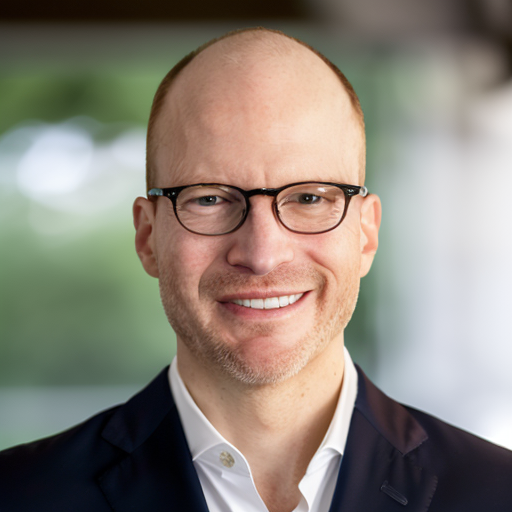
25 years of experience in the hedge fund business since joining the Baupost Group, Inc., one of the world’s premier hedge fund firms, as a portfolio manager.
In 2003, Andrew founded Pinnacle Asset Management, a leading commodity investment firm with approximately $3 billion under management today and recipient of numerous industry awards.
He was also a founder of Apex Capital Management, one of the first institutional-quality hedge funds focused on the Greater China region that peaked at approximately $1.5 billion in assets prior to the financial crisis.
Andrew holds a MBA from Harvard Business School as a Baker Scholar and his BA degree with high honors from Harvard College.

15+ years of experience in asset management including 6 years at Dynamic Beta investments overseeing quantitative research including proprietary replication and liquid solution models, risk systems, and trade implementation.
From 2001 to 2006, Mathias worked as a consultant/project manager on critical information systems projects for the French Ministry of Defense, France Telecom, and Lafarge.
Mathias holds a MBA from the NYU Stern School of Business, with a specialization in Quantitative Finance, and degrees from the University of Paris Dauphine, France.
DBi was founded in July 2012 and currently (as of August 31st, 2022) manages over $1.5 billion across several hedge fund replication strategies, including Managed Futures, Multi-Strategy and Equity Long/Short. The firm is engaged as a sub-advisor for the SEI Global Master Fund-The SEI Liquid Alternative Fund and the iMGP Stable Return Fund. The firm also sub-advises two ETFs – iMGP DBi Managed Futures ETF and iMGP DBi Hedge Strategy ETF.
DBi is a registered investment adviser with the SEC, is registered with the CFTC and with the National Futures Association as a commodity pool operator and commodity trading advisor.

Steve Romick, CFA®, joined the firm in 1996 and serves as the portfolio manager of FPA Crescent Fund and the FPA Contrarian Value product, as well as FPA Hawkeye Strategy and FPA Multi-Advisor Strategy. He is also a research analyst for FPA Capital Fund and the FPA Small/Mid-Cap Absolute Value product and FPA New Income and the FPA Absolute Fixed Income product. Prior to joining FPA, Romick was Chairman of Crescent Management and a consulting security analyst for Kaplan, Nathan & Co. Steven earned a BS in Education from Northwestern University and is a CFA Charterholder.

Brian Selmo, CFA®, joined FPA in 2008. He is director of research of the Contrarian Value Strategy at FPA. Selmo is a research analyst for the FPA Crescent Fund, the Contrarian Value product, as well as FPA Hawkeye Strategy. He was previously a founder and managing member of Eagle Lake Capital, LLC, from 2006 to 2008. He was a portfolio manager at Coast Asset Management from 2003 to 2006, a senior analyst at Third Avenue Management from 2001 to 2003, and an analyst at Rothschild, Inc. from 2000 to 2001. Selmo earned a Bachelor’s degree in Economics (with honors) from The Johns Hopkins University, where he graduated Phi Beta Kappa. He is a CFA charterholder.

Mark Landecker, CFA®, joined the firm in 2009 as a portfolio manager for the FPA Global Opportunity Fund and is also a research analyst for the Contrarian Value style and FPA Hawkeye. Prior to joining FPA, Landecker served as a portfolio manager at both Kinney Asset Management and Arrow Investments, Inc. He also has experience in corporate finance, consulting, and private equity. He earned a BBA with Honors from the Schulich School of Business, York University, Toronto, Canada.
Steven Romick, Brian Selmo, and Mark Landecker are the portfolio managers responsible for the Contrarian Opportunity strategy, which is the segment of the Alternative Strategies Fund’s assets managed by FPA. It is anticipated that this segment will be managed, to the degree practical, with the intent to replicate elements of private funds and separate accounts also run by FPA. The elements replicated could include investment strategies such as hedging, highly concentrated positions, illiquid and restricted securities, international investments, coupled with the potential for maintaining high levels of liquidity. FPA expects to implement these strategies through investing opportunistically in a wide variety of securities as discussed below. The Contrarian Opportunity strategy leads to investments that offer absolute rather than relative value with an objective of strong risk-adjusted returns. As absolute-return investors, the FPA team seeks genuine bargains rather than relatively attractive securities. The goal is to provide equity-like returns over longer periods (i.e., five to seven years) while seeking to protect against the permanent loss of capital. Attention is directed toward those companies offering the best combination of such quality criteria as strong market share, good management, and high normalized return on capital. A company purchased might not look inexpensive, considering current earnings and return on capital; however, its valuation may reflect such conditions as a weak economy, an increase in raw material costs, a management misstep, or any number of other temporary conditions. The FPA team believes that price drops caused by such developments can, and often do, provide buying opportunities. There can be no assurance that the fund will achieve its investment objective. The FPA team employs the broad mandate of the FPA contrarian strategy to invest across the capital structure, asset classes, market capitalization, industries, and geographies using a wide variety of instruments. The FPA team invests in an opportunistic manner, based on its view of the world and the businesses/situations that it understands. It looks for what is out of favor, taking into account the current landscape and how it might change over time, both organically and through exogenous events. The FPA team emphasizes independent research and spends little time with Wall Street analysts because it prefers to focus its research on interactions with business operators and industry leaders.

Matt Eagan, CFA®, is a vice president of Loomis, Sayles & Company and portfolio manager for the Loomis Sayles fixed income group. He has over 25 years of investment industry experience as a portfolio manager and fixed income analyst. Eagan is a co-portfolio manager of the firm’s flagship Loomis Sayles Bond Fund—which won the 2009 Morningstar Fund Manager of the Year award in the fixed income category—as well as the Strategic Alpha, Strategic Income, High Income, Institutional High Income, Investment Grade Bond, Fixed Income and Investment Grade Fixed Income funds. Eagan joined Loomis Sayles in 1997 as a fixed income research analyst for the multisector fixed income team. Prior to Loomis Sayles, he was a senior fixed income analyst at Liberty Mutual Insurance Company and a senior credit analyst at BancBoston Financial Company. Eagan earned a BA from Northeastern University and an MBA from Boston University.
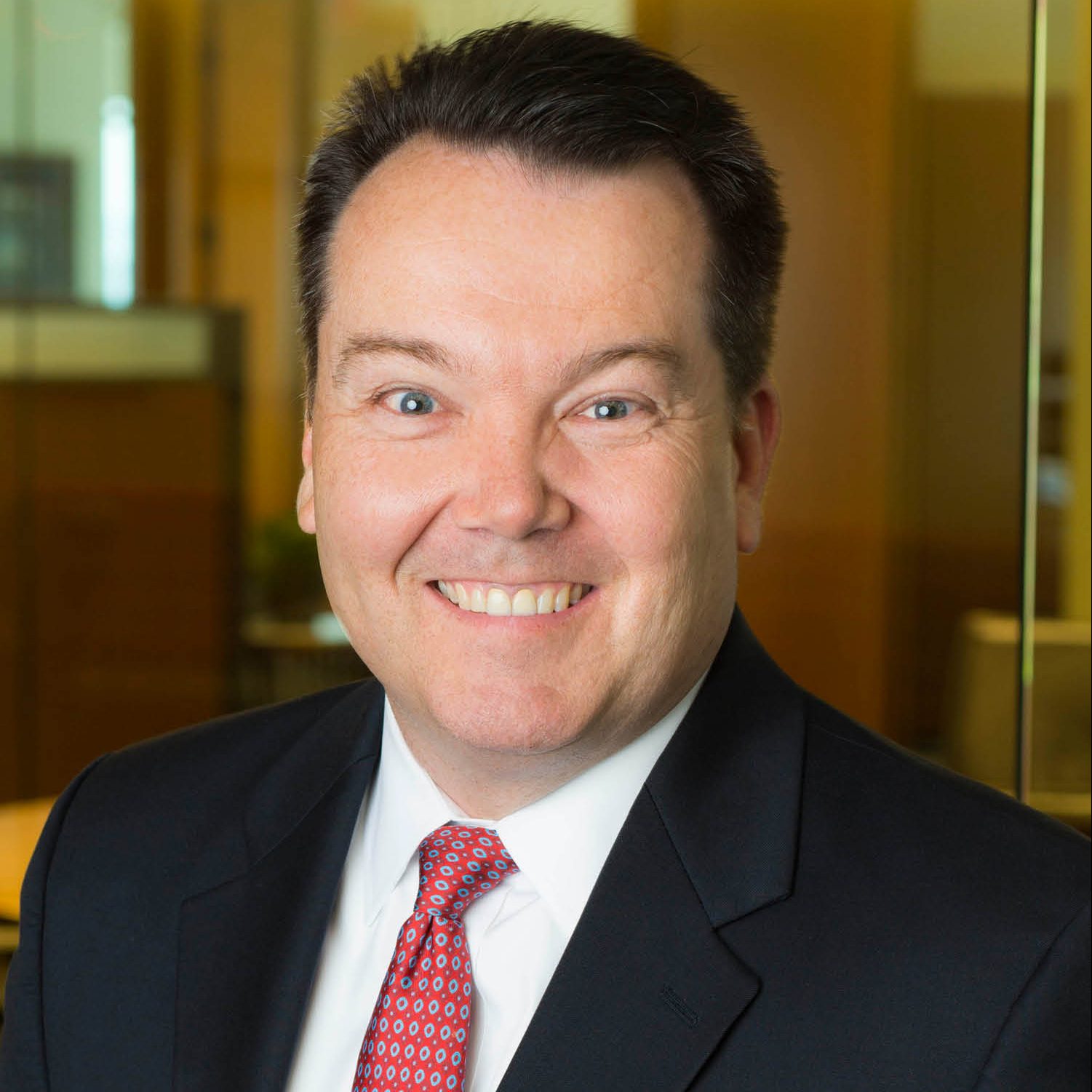
Brian Kennedy is a vice president of Loomis, Sayles & Company and co-portfolio manager of the firm’s multisector institutional strategies and mutual funds.
Brian started his investment industry career in 1990 as a senior fund accountant at the Boston Company. He joined Loomis Sayles in 1994 as a securitized and government bond trader. He transitioned to the high yield trading desk in 2001, where he initiated Loomis Sayles’ trading of bank loans, while also trading high yield, convertibles, derivatives and equities. Brian first joined the full discretion investment team as product manager in 2009. In 2013, he was promoted to co-portfolio manager of the investment grade bond products and in 2016 he was promoted again to co-portfolio manager of the multisector suite of products.
Brian co-manages a variety of mutual fund and institutional strategies, including the Loomis Sayles Bond, Credit Income, Fixed Income, High Income, High Income Opportunities, Investment Grade Bond, Investment Grade Fixed Income, Strategic Alpha and Strategic Income funds, as well as the multisector, core plus full discretion and US high yield institutional accounts.
Brian is actively involved in the Loomis Sayles mentorship program, undergraduate women’s investment network (UWIN) and summer internship programs. He was born and raised on the south shore of Massachusetts and enjoys coaching girls club hockey. Brian earned a BS from Providence College and an MBA from Babson College.
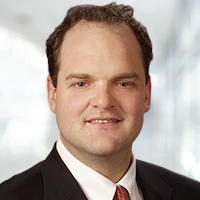
Todd Vandam is a vice president of Loomis, Sayles & Company and co-portfolio manager of the Loomis Sayles Strategic Alpha and High Income funds as well as several US high yield and global high yield institutional strategies. He also heads up the firm’s high yield sector team. Vandam began his career at Loomis Sayles in 1994 on the high yield trading desk. He was later promoted to high yield credit strategist for the full discretion team and held that position until 2016. Prior to joining Loomis Sayles, Vandam completed the US Army Airborne and US Army Ranger Schools. He was a Field Artillery Officer in the US Army, most recently working as a Fire Support Officer stationed in Panama. Vandam is a member of CFA Society Boston. He earned a BA in business and economics from Brown University
Matthew Eagan, Kevin Kearns, and Todd Vandam are the portfolio managers responsible for the Absolute Return Strategy, which is the segment of the Alternative Strategies Fund’s assets managed by Loomis Sayles & Company. The strategy has an absolute-return investment objective, which means that it is not managed relative to an index and that it attempts to achieve positive total returns over a full market cycle with relatively low volatility. The Loomis team intends to pursue its objective by utilizing a flexible investment approach that allocates investments across a global range of investment opportunities related to credit, currencies, and interest rates, while employing risk management strategies designed to mitigate downside risk. There can be no assurance that the fund will achieve its investment objective. The Loomis team may invest up to 75% of the total assets of the segment allocated to it in below investment-grade fixed-income securities (also known as “junk bonds”) and derivatives that have returns related to the returns on below investment-grade fixed-income securities. Under normal market conditions, the Loomis team also may invest up to 75% of the total assets of the segment allocated to it in investments denominated in non- U.S. currencies and related derivatives, including up to 50% in investments denominated in emerging-market currencies and related derivatives. Under normal conditions, the Loomis team may invest up to 20% of the total assets of the segment allocated to it in equity-related securities and derivatives. There is no limit on the amount of preferred securities. The Loomis team expects that exposure to these asset classes will often be obtained substantially through the use of derivative instruments. Currency positions that are intended to hedge the Loomis team’s non-U.S. currency exposure (i.e., currency positions that are not made for investment purposes) will offset positions in the same currency that are made for investment purposes when calculating the limitation on investments in non-U.S. and emerging-market-currency investments because the Loomis team believes that hedging a currency position is likely to negate some or all of the currency risk associated with the original currency position. Restrictions will apply at the time of purchase. The Loomis team’s investment process employs both top- down (macro themes) and bottom-up (security selection) components and uses the resources of the entire Loomis Sayles infrastructure. The Loomis team identifies key macro themes over a 3- and 12-month horizon and assesses top- down risk/return opportunities across the interest rate curve, credit markets, and currencies. The Loomis team draws on the strength and depth of the entire Loomis research team as it evaluates these themes. Fourteen Macro and Market Sector teams support the Loomis team by sharing their sector’s risk/return characteristics and uncovering specific credits that they believe may offer the best return potential. In selecting investments for the Absolute Return Strategy, the Loomis team develops long-term portfolio themes driven by macro-economic indicators. These include secular global economic trends, demographic trends and labor supply, analysis of global capital flows, and assessments of geopolitical factors. The Loomis team then develops shorter-term portfolio strategies based on factors including, but not limited to, economic, credit and Federal Reserve cycles, top-down sector valuations, and bottom-up security valuations. The Loomis team employs active risk management, with a focus on credit, interest rate, and currency risks. Additionally, the Loomis team will use risk management tools in constructing and optimizing the portfolio and seek to manage risk on an ongoing basis. The Loomis team expects to actively evaluate each investment idea based upon its return potential, its level of risk and its fit within the team’s overall macro strategy when deciding whether to buy or sell investments, with the goal of continually optimizing the portfolio.

John Orrico, CFA, founded Water Island Capital, the advisor to The Arbitrage Funds, in 2000. He currently serves as Chairman of The Arbitrage Funds series trust and Chief Investment Officer of the firm. Prior to founding Water Island Capital, Orrico directed arbitrage, special situations, and distressed hedge fund portfolios at Lindemann Capital, which he joined in 1999, in conjunction with starting the organizational process for the Arbitrage Fund. Prior to joining Lindemann Capital, Orrico joined Gruss & Co in 1994, focusing on merger arbitrage and special situations, and became Senior Arbitrage Analyst in 1996. Orrico has worked in the securities industry since joining Morgan Stanley in 1982, beginning in corporate finance, with additional experience in institutional equity trading, equity research analysis and portfolio management. He received a BA from Georgetown University.
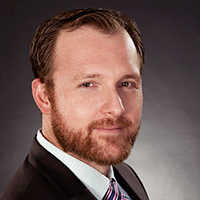
Roger Foltynowicz, CFA, CAIA, joined Water Island Capital in 2003 and currently serves as a Portfolio Manager on the merger arbitrage strategy. He has been a Portfolio Manager for the Arbitrage Fund since January 2005 and a Portfolio Manager for the Arbitrage Event-Driven Fund since October 2010. Prior to being promoted to Portfolio Manager, Foltynowicz worked as a Senior Research Analyst and Trader on the merger arbitrage and equity special situations teams at the firm. Prior to joining Water Island Capital, Foltynowicz worked for Jacobs Engineering as Project Accountant and also played professional baseball for the Cincinnati Reds organization. He received a Master of Science from Pace Graduate School of Business and a BA from Presbyterian College.

Gregg Loprete joined Water Island Capital in 2009 and currently serves as a Portfolio Manager on the credit opportunities strategy. He has been a Portfolio Manager for the Arbitrage Credit Opportunities Fund since October 2012 and a portfolio manager for the Arbitrage Event-Driven Fund since October 2010. Prior to joining Water Island Capital, Loprete worked at Keefe, Bruyette & Woods as a Convertible and Preferred Trader where he evaluated, implemented and managed convertible and capital structure investments. Prior to joining Keefe, Loprete was a Director in the Convertible Arbitrage Group at Ramius Capital Group. At Ramius, Loprete served as co-manager and trader for the firm’s US Convertible Arbitrage Portfolio. Earlier in his career, Loprete held various senior positions focused on convertible securities investments and merger arbitrage trading. He received an MBA in Finance from New York University and a BA in English Literature with a minor in Economics from the University of Delaware.

Mr. Osowiecki joined Water Island Capital in 2007 and currently serves as Co-Chief Investment Officer, where his responsibilities include strategic planning, managing the firm’s research analyst staff, and overseeing the firm’s investment strategies with a focus on continuing to deliver clients non-correlated return streams, stringent risk management, and strong capital preservation characteristics. Prior to being elevated to Co-CIO, Mr. Osowiecki was a
Portfolio Manager at the firm, and he continues to serve as a named Portfolio Manager to several of the firm’s products, including Arbitrage Fund (on which he has been named since June 2016), Water Island Event-Driven Fund (on which he has been named since September 2023), and certain sub-advisory relationships. Prior to being promoted to Portfolio Manager, Mr. Osowiecki worked as a Senior Research Analyst at the firm. As a Portfolio Manager and as a Senior Research Analyst, Mr. Osowiecki’s areas of focus include the firm’s global merger arbitrage strategy and leading the firm’s research efforts into EMEA-targeted events. He also previously served as a member of the firm’s Management Committee. Prior to joining the firm, Mr. Osowiecki worked in the Investment Product Division of The Hartford and as a project manager in commercial real estate development.
John Orrico, Roger Foltynowicz, and Gregg Loprete are the portfolio managers responsible for the arbitrage strategy, which is the segment of the Alternative Strategies Fund’s assets managed by Water Island Capital, LLC. The Water Island team seeks to generate long-term returns with low correlation to the equity and bond markets. This objective is pursued by investing in equity and debt securities of companies that are impacted by corporate events such as mergers, acquisitions, restructurings, refinancings, recapitalizations, reorganizations, or other special situations. More specifically, the Water Island team follows any one of three arbitrage strategies: merger arbitrage, convertible arbitrage, or capital structure arbitrage and may invest in both U.S. and non-U.S. securities. The Water Island team intends to focus the portfolio in only their Highest-conviction risk-adjusted ideas across these strategies, and will, to a limited extent, employ leverage within the Arbitrage Strategy. There can be no assurance that the fund will achieve its investment objective. Merger arbitrage is a highly specialized investment approach designed to profit from the successful completion of mergers, takeovers, tender offers, leveraged buyouts, spin offs, liquidations, and other corporate reorganizations. When a merger or acquisition deal is announced, the target’s stock price typically appreciates because the acquirer typically pays a premium relative to the current market price. Until the deal closes, however, the target’s stock price generally trades at a discount to the deal price. This discount is called “the spread.” The spread typically exists because investors demand compensation for the risk that the deal may fail to close and for the time value of money for the time it takes the deal to close. The most common arbitrage activity, and the approach the Water Island team generally will use, involves purchasing the shares of an announced acquisition target company at a discount to their expected value upon completion of the acquisition. The Water Island team may engage in selling securities short when the terms of a proposed acquisition call for the exchange of common stock and/or other securities. In such a case, the common stock of the company to be acquired may be purchased and, at approximately the same time, an equivalent amount of the acquiring company’s common stock and/or other securities may be sold short. The Water Island team may also execute the merger arbitrage strategy by using a company’s debt. Convertible arbitrage is a specialized strategy that seeks to profit from mispricing between a firm’s convertible securities and its underlying equity. The most common convertible arbitrage approach, and the strategy the Water Island team generally will use, matches a long position in the convertible security with a short position in the underlying common stock. The Water Island team seeks to purchase convertible securities at discounts to their expected future values and sell short shares of the underlying common stock in order to mitigate equity market movements. As stock prices rise and the convertible security becomes more equity sensitive, the Water Island team will sell short additional common shares in order to maintain the relationship between the convertible and the underlying common stock. As stock prices fall, the Water Island team will typically buy back a portion of shares it had sold short. Positions are typically designed to earn income from coupon or dividend payments and from the short sale of common stock. Capital structure arbitrage seeks to profit from relative pricing discrepancies between related debt and/or equity securities. For example, the Water Island team may purchase a senior secured security of an issuer and sell short an unsecured security of the same issuer. In this example the trade would be profitable if credit quality spreads widened or if the issuer went bankrupt and the recovery rate for the senior debt was higher. Another example might involve the manager purchasing one class of common stock while selling short a different class of common stock of the same issuer. It is expected that, overtime, the relative mispricing of the securities will disappear, at which point the position will be liquidated. Among these three arbitrage strategies, the primary focus of the Arbitrage Strategy is expected to be merger arbitrage. The Water Island team will typically be long the target’s shares and short the acquirer’s stock (to hedge the market risk where the acquirer is using stock and not cash to fund the acquisition). The Water Island team will also use options in an attempt to hedge deal-specific and market risks, especially in the case of cash-only deals where the team will only long the target’s stock.
The value of a hypothetical $10,000 investment in the iMGP Alternative Strategies Fund compared with ICE BofA US 3-Month Treasury Bill, Bloomberg Barclays U.S. Aggregate Bond Index, HFRX Global Hedge Fund Index and US Fund Multistrategy.
The hypothetical $10,000 investment at fund inception includes changes due to share price and reinvestment of dividends and capital gains. The chart does not imply future performance. Indexes are unmanaged, do not incur fees, expenses or taxes, and cannot be invested in directly.
Performance quoted does not include a deduction for taxes that a shareholder would pay on the redemption of fund shares.
Select the set of performance tables to view.
Performance data quoted represents past performance and does not guarantee future results. The investment return and principal value of an investment will fluctuate so that that an investor’s shares, when redeemed, may be worth more or less than their original cost. Current performance of the fund may be lower or higher than the performance quoted. Investment performance reflects fee waivers in effect. In the absence of such waivers, total return would be reduced. Returns less than one year are not annualized. Indexes are unmanaged, do not incur fees, and cannot be invested in directly.
While the fund is no-load, management and other expenses still apply.
Investment performance reflects fee waivers in effect. In the absence of such waivers, total return would be reduced. The gross and net expense ratios can be found in the most recent Summary Prospectus (4/30/2024). There are contractual fee waivers in effect through 4/30/2025.

The Alternative Strategies Fund was down less than a percent during the quarter, resulting in a full year return of 6.8%. MORE
![iMGP Alternative Strategies [MASFX] Q3 24 Video Update](https://imgpfunds.com/wp-content/uploads/2019/11/Canva-Low-Angle-Photo-of-Glass-Buildings-scaled-e1586212396561.jpg)
In this new video update, Mike and Jason dive into each of the underlying strategies for more in-depth commentary on performance. MORE
iMGP Funds emails provide investors a way to stay in touch with us and receive information regarding the funds and investment principles in general. Topics may include updates on the funds and managers, further insights into our investment team’s processes, and commentary on various aspects of investing.
iMGP Fundsʼ investment objectives, risks, charges, and expenses must be considered carefully before investing. The prospectus contains this and other important information about the investment company, and it may be viewed here or by calling 1-800-960-0188. Read it carefully before investing.
Mutual fund investing involves risk. Principal loss is possible.
Though not an international fund, the fund may invest in foreign securities. Investing in foreign securities exposes investors to economic, political and market risks, and fluctuations in foreign currencies. Investments in debt securities typically decrease when interest rates rise. This risk is usually greater for longer-term debt securities. Investments in mortgage-backed securities include additional risks that investor should be aware of including credit risk, prepayment risk, possible illiquidity, and default, as well as increased susceptibility to adverse economic developments. Investments in lower-rated and non-rated securities present a greater risk of loss to principal and interest than higher-rated securities. Derivatives may involve certain costs and risks such as liquidity, interest rate, market, credit, management, and the risk that a position could not be closed when most advantageous. Investing in derivatives could lose more than the amount invested. The fund may make short sales of securities, which involves the risk that losses may exceed the original amount invested. Multi-investment management styles may lead to higher transaction expenses compared to single investment management styles. Outcomes depend on the skill of the sub-advisors and advisor and the allocation of assets amongst them.
Merger arbitrage investments risk loss if a proposed reorganization in which the fund invests is renegotiated or terminated.
Leverage may cause the effect of an increase or decrease in the value of the portfolio securities to be magnified and the fund to be more volatile than if leverage was not used.
Diversification does not assure a profit nor protect against loss in a declining market.
Index Definitions | Industry Terms and Definitions
The iMGP Funds are distributed by ALPS Distributors, Inc.